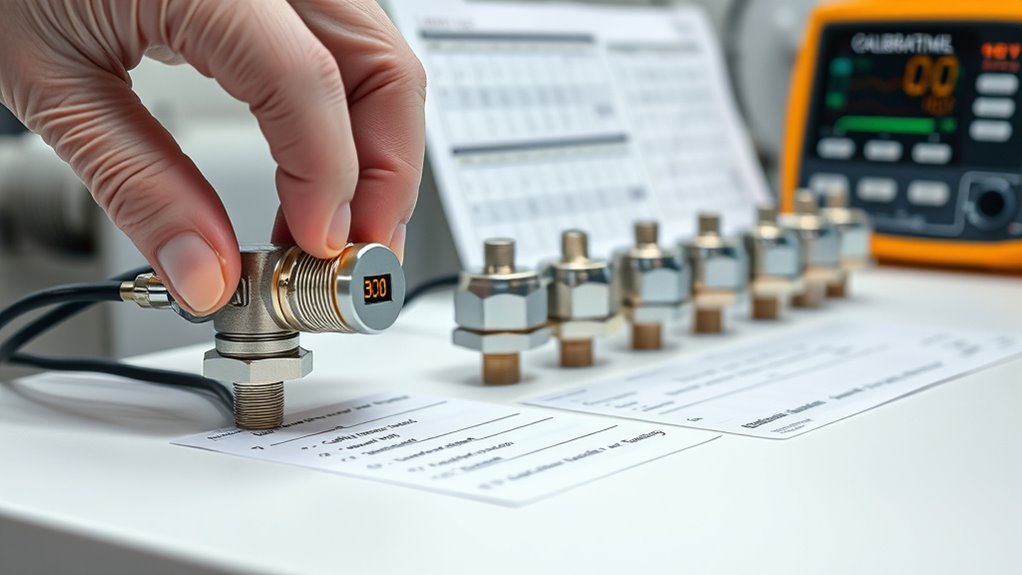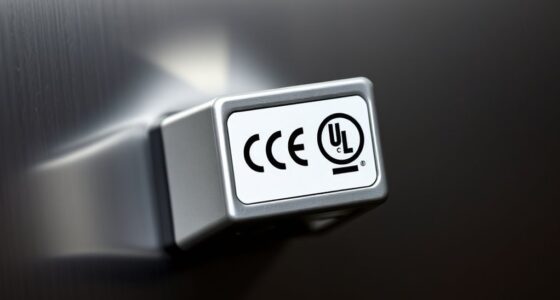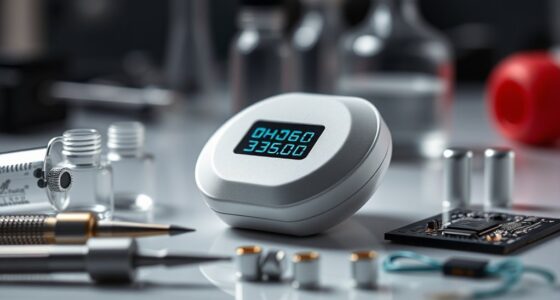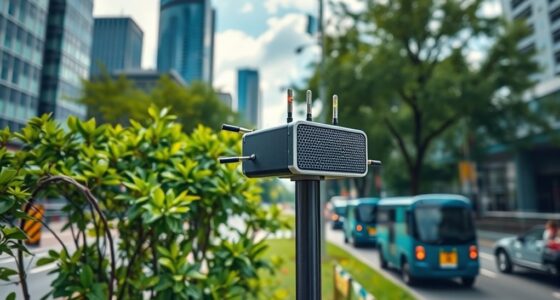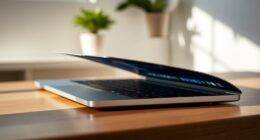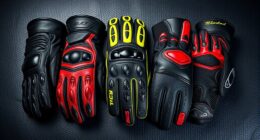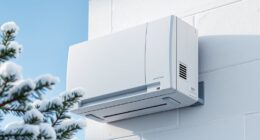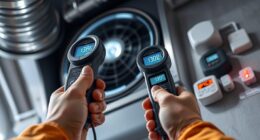To determine when to replace or recalibrate sensors, consider their type, environment, and manufacturer guidelines. Regularly monitor sensor performance and watch for drift or signs of degradation. Critical systems require more frequent calibration to guarantee safety and accuracy, while less critical applications may allow longer intervals. Using sensor data and environmental factors helps fine-tune your schedule. Keep an eye on trends; understanding these factors can greatly improve your calibration routine and avoid costly errors.
Key Takeaways
- Follow manufacturer recommendations as a baseline, adjusting based on environmental conditions and sensor performance data.
- Monitor for sensor drift regularly to detect when recalibration or replacement is necessary.
- Increase calibration frequency for safety-critical or highly sensitive applications to ensure measurement accuracy.
- Use historical performance and environmental stressors to tailor calibration intervals and prevent premature sensor failure.
- Recognize signs of sensor degradation early to avoid costly errors, and recalibrate or replace as needed.
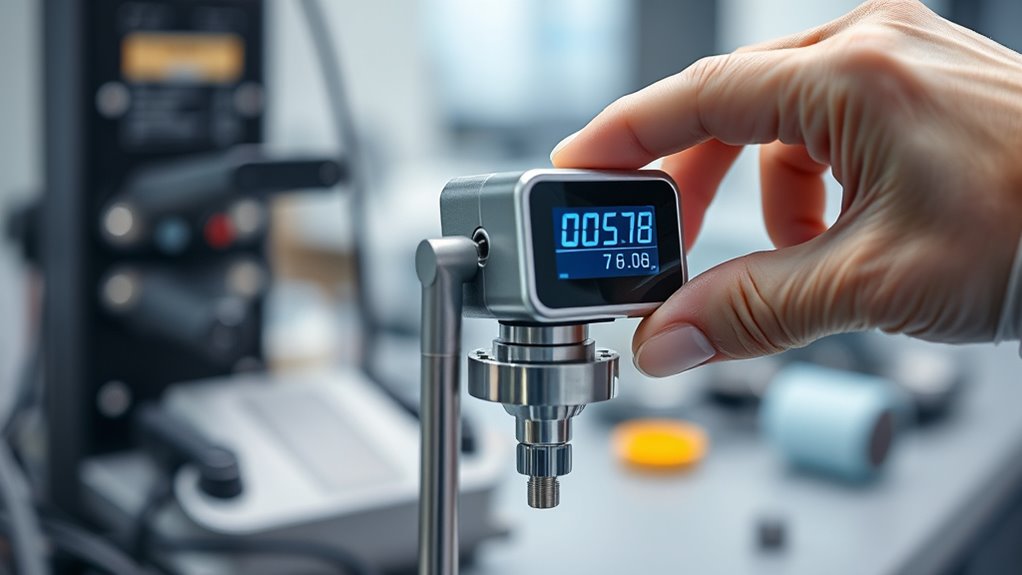
Have you ever wondered how often you should calibrate your measurement instruments to guarantee accuracy? The answer largely depends on understanding sensor drift and establishing the right calibration frequency. Sensor drift occurs over time as sensors naturally lose precision due to environmental factors, aging, or mechanical wear. This gradual deviation can cause your measurements to become unreliable, making it essential to schedule regular calibration checks. The key is to find a balance: calibrate too often, and you waste time and resources; wait too long, and your data may become inaccurate, leading to costly errors or safety issues.
Calibration frequency isn’t a one-size-fits-all solution. It varies based on the type of sensor, its application, and the environment where it’s used. For example, sensors operating in harsh conditions—exposed to extreme temperatures, humidity, or chemical vapors—tend to drift faster and require more frequent calibration. Conversely, sensors used in stable environments might need less frequent adjustments. Typically, manufacturers provide recommended calibration intervals, but these are starting points rather than strict rules. You need to observe the sensor’s performance over time and adjust your calibration schedule accordingly.
Monitoring sensor drift is essential. If you notice that measurements are gradually shifting or inconsistent, it’s a clear sign that calibration is overdue. Regular calibration checks help catch this drift early, maintaining measurement accuracy and system reliability. Implementing a calibration schedule based on historical data and environmental conditions can prevent unexpected failures and costly downtime. Developing a routine also helps in identifying patterns in sensor deterioration, so you can fine-tune your calibration frequency without unnecessary testing.
Another factor influencing calibration intervals is the criticality of the measurements. If you’re relying on sensors for safety-critical processes or precise scientific data, more frequent calibration is advisable. Even slight deviations can have significant consequences, so erring on the side of caution benefits you in the long run. On the other hand, less critical measurements might allow for longer intervals, provided you validate the sensor’s accuracy periodically.
Ultimately, understanding your sensors’ behavior and keeping an eye on sensor drift helps you determine the best calibration frequency. Maintaining a proactive approach ensures your measurements stay accurate, reducing risks and enhancing operational efficiency. Remember, calibration isn’t just a routine task—it’s an investment in data integrity and safety. By tailoring calibration intervals to your specific needs and regularly reviewing sensor performance, you can keep your systems running smoothly and trust your measurements every time. Additionally, knowledge of sensor degradation can help in predicting when recalibration might be necessary, further optimizing maintenance schedules.
Frequently Asked Questions
How Do Environmental Factors Affect Sensor Calibration Intervals?
Environmental impacts, like temperature fluctuations, humidity, and dust, can accelerate calibration drift, making sensors less accurate over time. These factors cause sensors to deteriorate faster, so you should regularly check calibration intervals and recalibrate more often in harsher conditions. By monitoring environmental influences, you guarantee sensors remain reliable, preventing inaccurate readings that could compromise your processes or safety.
Can Calibration Interval Recommendations Vary by Industry Standards?
You know what they say, “standards make the difference.” Yes, calibration interval recommendations can vary by industry standards because different sectors have unique compliance requirements. You need to follow specific guidelines and maintain proper calibration documentation to guarantee your sensors stay accurate. Staying aligned with industry standards not only helps you meet compliance but also ensures reliable data, reducing the risk of costly errors and maintaining trust in your measurements.
What Are the Signs Indicating a Sensor Needs Recalibration Sooner?
If you notice sensor drift, where readings become inconsistent or deviate from expected values, it indicates calibration urgency. Sudden or gradual changes in sensor output also signal that recalibration is needed sooner. Additionally, if your sensor’s accuracy diminishes over time or after harsh conditions, it’s a clear sign to recalibrate promptly. Addressing these signs helps maintain reliable data and prevents costly errors or downtime.
How Does Sensor Age Influence Calibration Frequency?
As your sensor matures like a seasoned traveler, it experiences sensor drift that affects calibration accuracy. Older sensors are more prone to subtle shifts, meaning you’ll need to recalibrate more frequently to keep readings true. Think of it as fine-tuning an instrument that’s lost a bit of its edge over time. Regular recalibration guarantees your sensor remains dependable, despite its age, preserving the precision you rely on.
Are There Automated Tools to Determine Optimal Calibration Intervals?
Yes, you can use automated scheduling tools powered by calibration algorithms to determine ideal calibration intervals. These tools analyze sensor data, environmental conditions, and usage patterns to set precise calibration timelines. By employing such automated systems, you guarantee sensors stay accurate without unnecessary recalibrations, saving time and resources. You get real-time recommendations, making calibration management more efficient and reliable.
Conclusion
Remember, setting the right calibration intervals guarantees your sensors stay accurate, much like a seasoned sailor knows when to trim the sails. Don’t wait until your readings drift like a ship off course; recalibrate or replace when needed. Keep a keen eye on performance, and you’ll avoid costly errors. With proper maintenance, your sensors will serve you faithfully, standing the test of time like the sturdy oak in a storm, guiding you safely through every measurement voyage.
